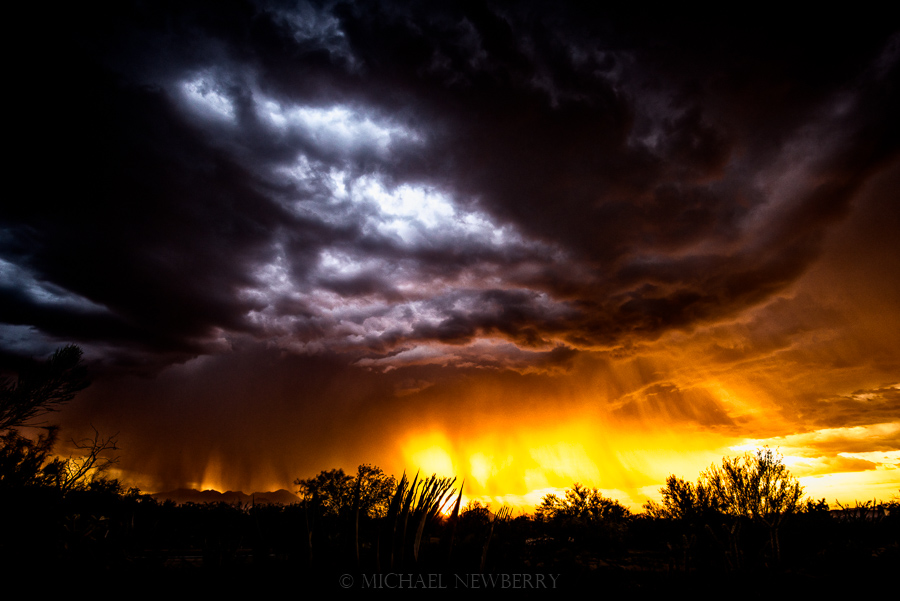 I call this image “Revelation” because of its Biblical overtones. In this visualization, the setting sun, illuminating a series of inter-mountain basins of the Arizona desert, virtually screams “Behold!” Layers of desert dust and thin clouds diffuse the low sun while filling the valleys with the most glorious combination of light and shadow.
I call this image “Revelation” because of its Biblical overtones. In this visualization, the setting sun, illuminating a series of inter-mountain basins of the Arizona desert, virtually screams “Behold!” Layers of desert dust and thin clouds diffuse the low sun while filling the valleys with the most glorious combination of light and shadow.
All posts by mnewberryphoto
Angry Sky

The Arizona summer monsoon brings 2 to 3 months of spectacular sunsets almost daily. Oftentimes, the sky appears to have something sinister in mind, as in this image from under the belly of a thunderstorm on July 30, 2015. On days when (often violent) thunderstorms occur, they often form in late afternoon either when the sun is setting or low in the Western sky. Capturing the dynamic range of such light can be difficult as strong wind usually prevents range expansion by combining a High Dynamic Range (HDR) series. In such conditions, I usually take a bracketed series of 5 exposures at +2, +1, 0, -1, and -2 EV relative to the metered exposure, then choose the best for further editing. This image used a 16mm lens at f/8. Some of the details in the upper, dark areas are lost when displayed at this small size.
Frost Dragon
 “Frost Dragon” was made late afternoon on New Year’s Eve when it was -30F outside. Under the right conditions, frost deposits can create amazing patterns and I was fortunate to discover this macro view on a window pane. Do you see the dragon?
“Frost Dragon” was made late afternoon on New Year’s Eve when it was -30F outside. Under the right conditions, frost deposits can create amazing patterns and I was fortunate to discover this macro view on a window pane. Do you see the dragon?
Altering the Perspective
The ability to change the perspective of an image is a powerful feature of image editing software like Adobe Lightroom or Photoshop. Many photographers use the vertical perspective transformation for making converging lines become parallel, correcting the distortion that appears when the camera is pointed upward at a building. But this type of perspective transformation can also be used to add convergence or even recover the visualization you were unable to achieve in the field. In this lesson, I will describe how to alter the perspective to get a more emotive angle on a trailing fence — an effect I visualized in the field but couldn’t achieve because a large log pile blocked the ideal location for capturing the image. The result of the transformation is not exactly what I visualized but is closer to the ideal than my raw image.
Read the full article
